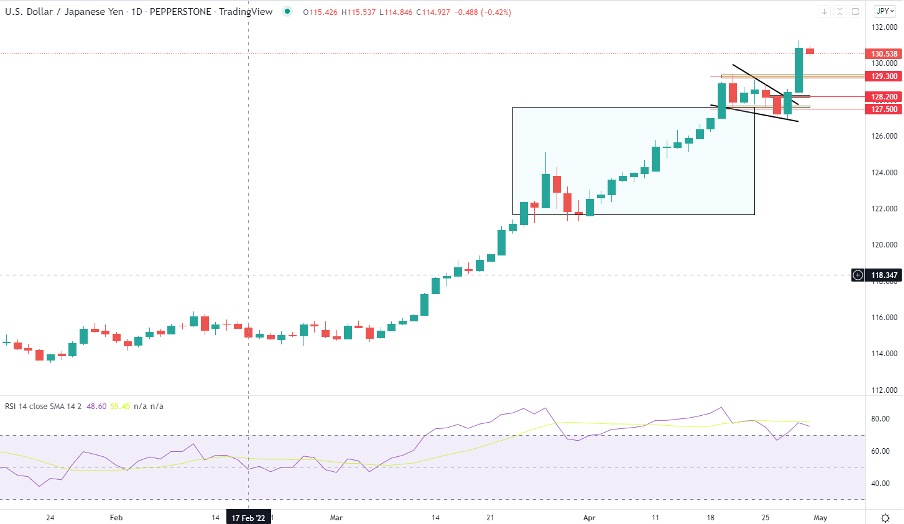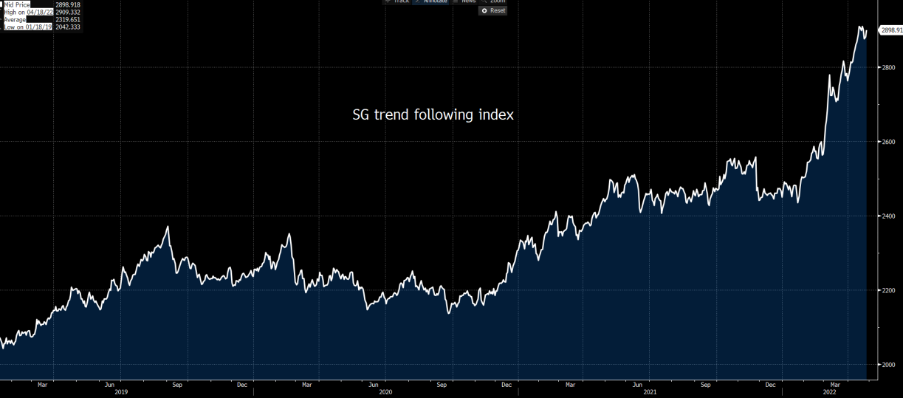- English (UK)
The result? Financial market volatility and sustained trending conditions (in price) across asset classes.
The inflation seed was born
From 2020 and in response to the covid outbreak, we saw the coming together of incredible global fiscal support from governments, while central banks took rates to zero - some into negative territory - and most DM central banks accumulated trillions of USDs of assets on their balance sheets, all designed to take duration out of the markets and push market players to take on as much risk as they could - the inflation seed was planted.
Throw in a massive supply shock from Russia’s invasion of Ukraine and the net result was a breathtaking increase in price pressures, that in many cases far exceeded central banks' inflation targets. What’s more, markets moved from pricing inflation as ‘transitory’ to one of entrenched price pressures - we were left wondering what exactly is the correct neutral rate for respective bank policy rates and how high the policy rate could move above this to truly bring demand in equilibrium with supply – all while assessing the probability that central banks get the experiment badly wrong, sending economies into recession.
The financial markets have seized on this uncertainty – volatility increased and with-it liquidity in markets evaporated – the ability to get in and out of positions in size exacerbates movement. Add in deleveraging and hedging activity and we have a melting pot of trader flow.
In response to the extreme price pressures, a few high inflation-facing central banks have started front-loading rate hikes, while others (BoJ for example) try desperately to maintain an accommodative line – relative terms of trade also matter, subsequently, the countries looking to tighten policy are typically commodity exporters, while the relatively dovish central banks (again, Japan) are importers – this is central bank divergence and tactical trading at its purest.
This is where we have seen absolutely outrageous trending conditions develop in FX markets – where the rate of change in price and the slope of the trend have caught traders’ eye, as has the sheer duration of these trends – and there really have been so many case studies to view in 2022 - Palladium, Crude, Gold, the JPY, the USD are all there – in fact, we saw the USD close up 18 of 20 days in April to have its best monthly gain since 1967.
These have been just too compelling for retail traders and the temptation to countertrend was all too clear.
USDJPY daily chart

(Source: TradingView - Past performance is not indicative of future performance.)
It brings up the subject of the correct trading strategy for these conditions – of course, one’s timeframe is a consideration but scalping aside, retail day and swing traders have been magnetised to these trends, especially when we got to a certain maturity – by way of example, take USDJPY - in early April it closed higher for 11 straight days – it was at this point that traders piled into short positions thinking that the probability of a move lower had sufficiently risen – after rallying for a further 2 days (making it 13) and another 100 pips higher stops were hit – many reloaded and picked up a decent scalp but it wasn’t long before price pushed higher again.
EURUSD and GBPUSD in late April were similar – a highly mature trend and traders were piling into longs for a counter move. Again, for many this hurt the account – and while they all had grossly oversold signals on the charts, to many the idea of “this must go up soon” was basically their trading thesis. In a regime shift like this, where global capital is still making moves, we need to think about the world differently.

(Source: Bloomberg - Past performance is not indicative of future performance.)
Conversely look at how systematic-trend following funds (CTAs) performed in March and April – if we measure using the SG CTA index (which takes the performance of the biggest 20 trend-following funds) - we saw incredible returns of 7.7% and 4.9%. The idea of buying what’s strong and selling what’s weak has been where the money was made – aligning with the flow of capital helped not just preserve one’s equity l but even saw a return on it.
It can be all too tempting to trade against the trend, especially one that has been so intense and long in the tooth – but when trading with leverage, countering requires pinpoint timing.
Trend following and momentum trading doesn’t always pay off and we can have many false starts and small losses – but in times like this knowing that a body in motion often stays in motion would have kept you out of a number of bad trades and may have even seen a few very profitable ones too.
Having definition and a range of trading strategies (mean reversion, trend following, momentum, tactical long/short, etc) is often the way to go for a complete trader. Spread the love, diversify strategies, and potentially reap the benefits as a trader.
Ready to trade?
It's quick and easy to get started. Apply in minutes with our online application process.
The material provided here has not been prepared in accordance with legal requirements designed to promote the independence of investment research and as such is considered to be a marketing communication. Whilst it is not subject to any prohibition on dealing ahead of the dissemination of investment research we will not seek to take any advantage before providing it to our clients.
Pepperstone doesn’t represent that the material provided here is accurate, current or complete, and therefore shouldn’t be relied upon as such. The information, whether from a third party or not, isn’t to be considered as a recommendation; or an offer to buy or sell; or the solicitation of an offer to buy or sell any security, financial product or instrument; or to participate in any particular trading strategy. It does not take into account readers’ financial situation or investment objectives. We advise any readers of this content to seek their own advice. Without the approval of Pepperstone, reproduction or redistribution of this information isn’t permitted.

